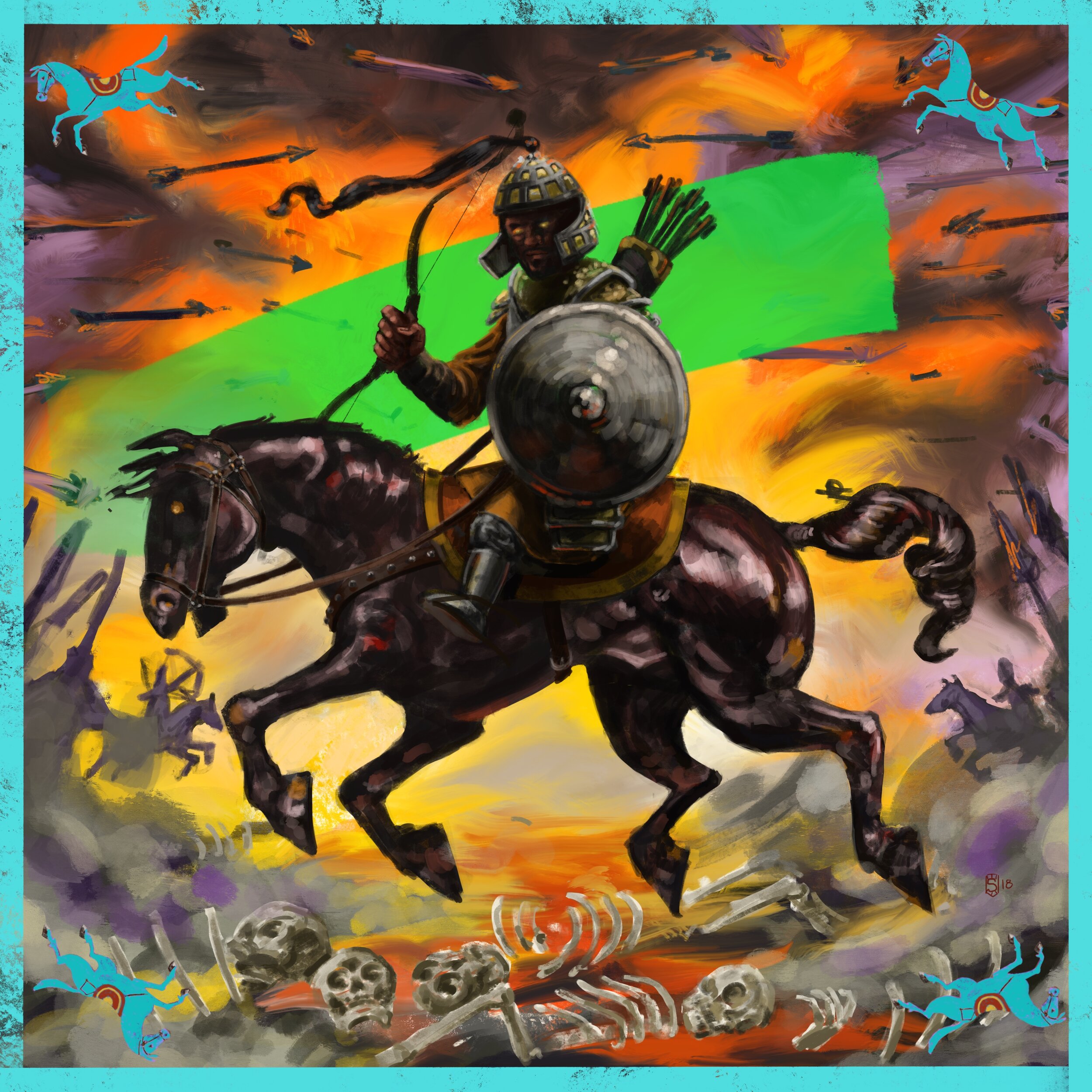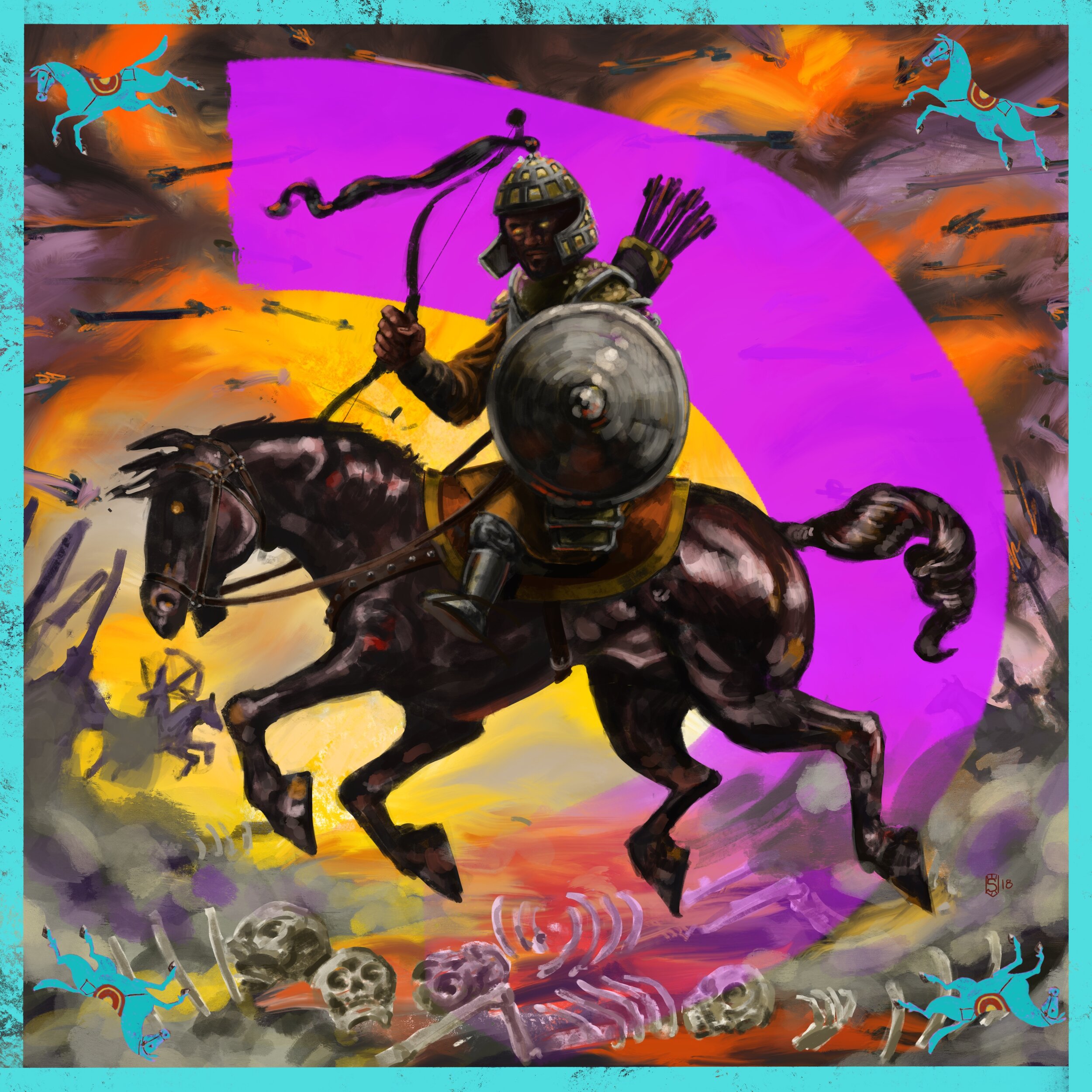Civilizations: The Rise of the Mongolian Empire
The Mongolian Warriors, Re-Imagined
Following the incredible success of our “Civilization Suit Lining Series”, we decided to take it a step further with the latest addition to our collection - The Mongolian Warriors. Our past series featured cultures that are of great renown for their artistic heritage, the Mongolians were not. Although the arts flourished under Mongol rule, accurately portraying the ancient Mongols was a challenge in itself as they did not create their own artwork. This could be greatly attributed to their preoccupation with conquering and pillaging in their quest to expand their empire. A civilization so dominant, at one point they nearly ruled all of the known world.
We decided to commission Sunflowerman, a true rising star and soon to be a legend in the sartorial community, to create this bespoke and original series of artwork. Through diligent research and with his assistance we created remarkable and all encompassing depictions perfectly fit for every sartorial enthusiast. This artistic collaboration has captured the true dominance, brutal nature, unique skills and sheer brilliance that defined the Mongolian Warriors.
Constructing a Pocket Square vs. A Suit Lining
Aspect Ratio, Seamless Art and other Important Factors to Note
Pocket squares, in nature, are designed with a 1:1 aspect ratio. In order to construct the perfect Huddersfield pocket square our exclusive artwork is carefully designed with contrasting borders in order to reflect the hand rolled edges. Crafted in Italy by the best artisans, our pocket squares are sized a bit larger than average in order to prevent from sinking down into your jacket pocket. This way you will always be looking distinguished with no readjustments necessary.
In addition to the pocket squares, we have also transposed all the artwork into seamless patterns. With no visible edges clothiers can enjoy utilizing these bespoke linings effortlessly.
Genghis Khan - The Early Years
They say that Genghis was born clutching a blood clot, which was a traditional sign that he would be destined to become a great leader. Born under the name Temüjin, meaning “of iron” or blacksmith, his early life was not one without strife. Delivered to the family of his future wife at the age of 9, he was set to serve as the head of their household until he was of the marriageable age of 12. After his father was poisoned by rivals, young Temüjin unsuccessfully tried to claim his father’s position as chief. The tribe refused and abandoned their clan and for years Temüjin and his family struggled in a life of extreme poverty. Nothing could stop Temüjin though, nor could anything or anyone stand between him and his destiny. Through an ensuing power struggle for leadership of the clan and tribe, Temüjin and his brother murdered their half-brother for trying to take control. In a more notable turning point, his first wife was kidnapped by rivals and was kept as a spoil of war for months until Temüjin and his allies rescued her. Then, for the first and last time Temüjin was even captured and enslaved. Eventually escaping, the guards who assisted him later became his most trusted generals as he ascended to absolute power over the steppe.
Taking the Throne
From Slave to Absolute Ruler
It was not until he was in his forties that Temüjin became who we know as Genghis Khan. Genghis initially rose to power by strategically offering himself as an ally to his father’s sworn blood brother Wang Khan. Through successful campaigns against rival clans he inspired loyalty from those that he conquered by integrating them into his tribe and sharing the spoils of war. With each victory his ranks grew larger and he became even stronger. He would soon be the sole ruler of the Mongol plains. Notably, he created a new code of laws which banned infighting, hunting of animals during breeding season, theft and the selling of women. Under mongol rule there was religious freedom and the poor were exempt from taxation. By the time of his death, he ruled from the Pacific Ocean to the Caspian Sea.
Where Courage Meets Skill
Weaponry of the Mongol Hordes
The archers in his army were able to shoot forward and backward on horseback at full gallop. Unlike other armies, the Mongols traveled with no supply train other than a large reserve of horses. The army consisted almost entirely of cavalrymen, who were expert riders and deadly with a bow and arrows. Medieval Mongol Empire warfare relied mostly on mounted archers. Mongolian cavalry favored the Mongol recurve bow when riding into battle. This type of bow has limbs that curve away from the archer, allowing the bow to lend more potential energy and speed to the arrow. Being smaller than other bows, the Mongol recurve bow was also a less-cumbersome weapon for a soldier on horseback.
Most notable of Mongol battle strategies was the feigned retreat, a classic tactic of steppe warfare. A smaller group would charge and then retreat from the enemy. Having thought that they were winning, the foe would pursue the retreating soldiers only to be caught in an ambush by the rest of the army that was laying in wait.
The curved swords of the Mongols were adapted from the Yuan dynasty. They were preferred as they were able to be used one handed for chopping and slashing motions. The hilt was an addition to prevent the blood from reaching the handle so the sword holder would not lose their grip during battle.



Genghis Khan often rewarded those who had been loyal to him. Quite often he would place them in positions of leadership for households or army units even though many of which originated from low-ranking clans. His loyal companions frequently had more protection than he himself or his family. Loyalty was everything to Genghis Khan. Through his campaigns, historians estimate that his army killed roughly 11% of the world’s population.










